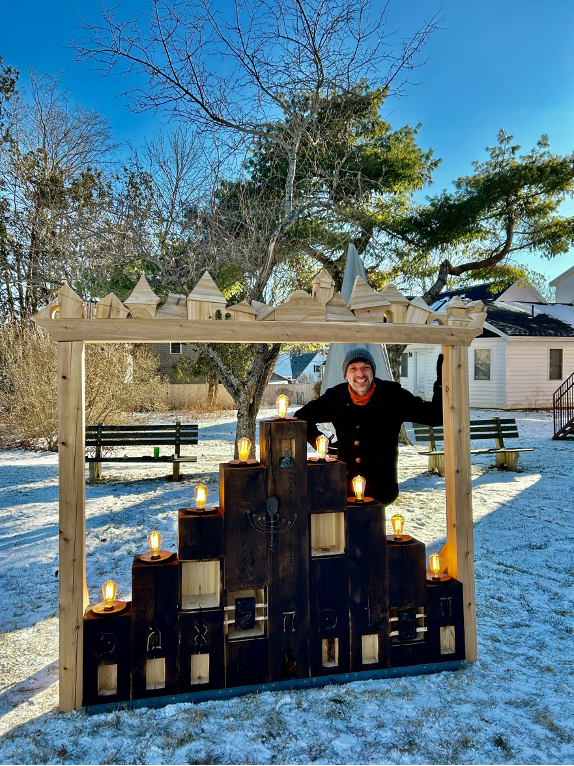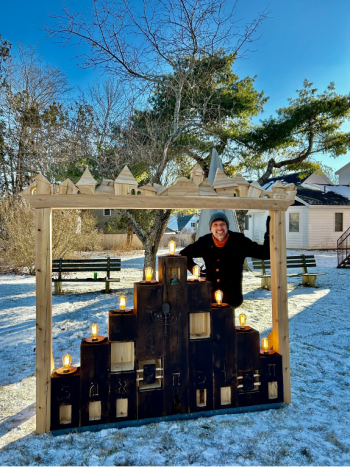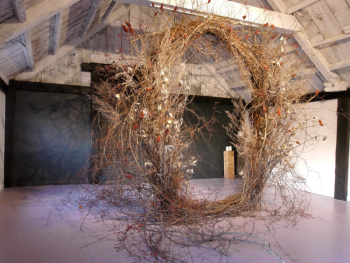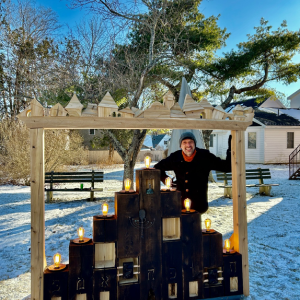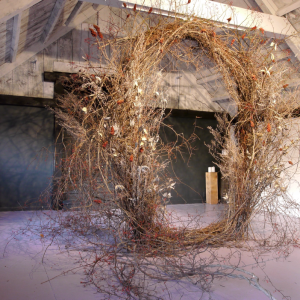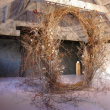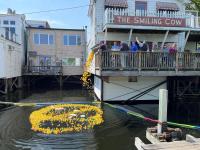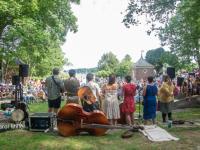Menorah sculpture in Searsport to be dedicated Dec. 31
SEARSPORT — The town of Searsport has undergone dramatic change in the past year.
"With major roadworks and other improvements now complete, the downtown has become a magnet for holiday visitors walking along new brick sidewalks, lit by elegant street lamps and holiday decorations," said Aaron Rosen, of the Parsonage Gallery, in a news release.
This season, the town’s Christmas decorations in front of the Penobscot Marine Museum have a new companion. In Memorial Park on Main Street, Searsport’s Community Enhancement Committee has installed the town’s first major work of public art in many years: a monumental Hanukkah menorah by Ellsworth-based sculptor Aaron Margolis. The commission of this new sculpture is made possible through financial support from the Town of Searsport, the Parsonage Gallery, local churches, and individual donors.
Following Jewish tradition, the menorah will be lit for eight nights in a row for Hanukkah, the Festival of Lights. The menorah will be dedicated on a special ceremony on Tuesday, Dec. 31, at 6 p.m., with remarks from the artist and a public reception immediately afterwards at the Parsonage Gallery, around the corner at 8 Elm Street.
All are welcome to celebrate Hanukkah and New Year’s Eve at the gallery, which presently features its annual winter group exhibition and an installation by Heather Lyon, Portal, woven from found organic materials from Sears Island. Visitors are encouraged to step through the sculpture to reflect on the theme of transformation in the new year.
The menorah is the first major public work of art by Aaron Margolis (b. 1982), who was raised in New York City and lives and works in Ellsworth. He is a self-taught artist, craftsperson, and teacher, who focuses on creating sculptures, assemblages, and installations combining traditional woodcarving techniques with discarded objects. His practice is steeped in the Yiddishkeit heritage of his forebears’ in Eastern Europe and informed by creative dialogue with artistic precursors including Philip Guston, Red Grooms, and Louise Nevelson.
The menorah is replete with details, including a lintel with a roofline inspired by the shtetl, or town, where Margolis’ family lived in Eastern Europe before immigrating to America. The artist also found inspiration in Yizkor books, memorial volumes produced by European Jews after the Holocaust, mourning their decimated communities. Through recovered objects, including rusted implements dug up from the artist’s property, the menorah suggests the potential for recovery, even in dark times—the theme of Hanukkah itself.
“I see the menorah as a liminal place, a passageway into my imagination and the places lost to us through the hands of history,” said Margolis.

